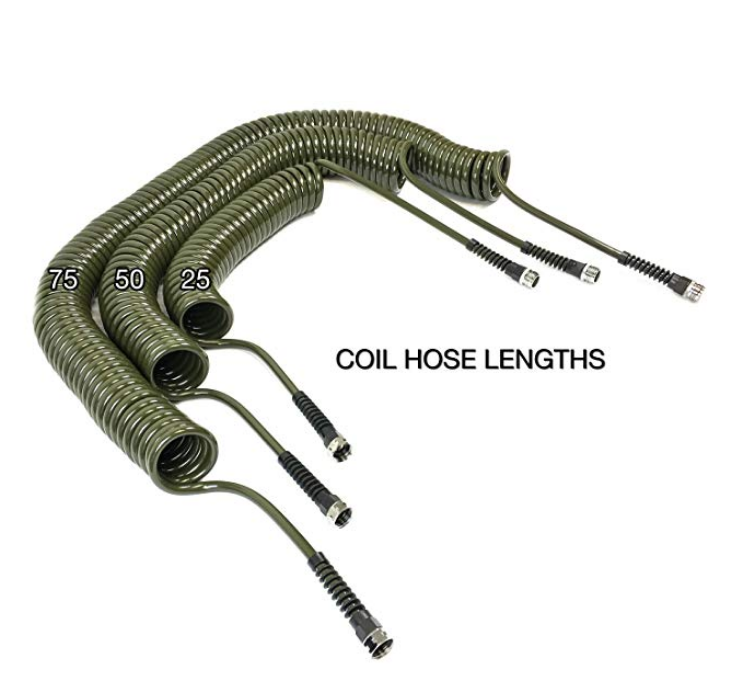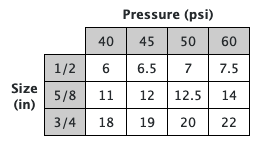With a larger property, a front and a back porch, and several decks, we needed some hoses to wash things off. This became more necessary once we got a dog, as we have “wee-wee” pads on a bunch of porches for him to go to the bathroom on, since our yard is still pretty muddy. Those things need daily rinsing lest they get smelly.
I thought the flexible coil type hoses would be convenient, so I ordered a few, two 25 footers and a 50 footer, with a 3/8 inch inner diameter. That seems to be the most common size available for that type of hose.

What I got instead was a lesson in pressure, diameter, and volume for hoses. The 25 foot hoses had pretty diminished flow; almost not enough to hose off a small deck. About right for watering plants, but not much more. The 50 foot variety was completely worthless; too restrictive of a flow for even watering plants, and completely worthless for anything else, except perhaps drinking from.
So what’s the problem?
The problem is that most people with substantial water pressure at the street don’t need to worry about this stuff, but with only 60 psi (pounds per square inch, a measure of pressure), we do. 60 psi is workable in every way, but you just have to pay more attention to what you are doing, and there are some minor compromises.
Consider this flow volume chart (in gallons per minute) for pressure vs hose size for a 100 foot hose.

The reason they don’t show pressures higher than 60 psi is that, well, you probably aren’t worried about this kind of thing if your water pressure is above 60 psi.
What’s interesting here is that a 1/2 inch hose has about 1/3 the flow volume of a 3/4 inch hose, despite being only 1/3 less in diameter. They don’t even list 3/8 inch hoses (what I inadvertently purchased) but extrapolating would probably yield something like 3 gallons per minute at 100 foot length; probably not to far off a kitchen faucet.
This chart doesn’t say anything about length, which has a substantial affect on flow rate; a 25 foot hose will have 4 times the flow rate of a 100 foot hose; at 25 feet in length, that 3/4″ hose will flow 88 gallons per minute!
What we’ve done to remedy poor flow rates is to use the largest hose possible in the shortest length that makes sense; 5/8″ 25 foot coiled hoses for the decks and 3/4″ 50 foot hoses for outside. Luckily we have hose bibs about every 30 feet or so; 50 foot lengths work just fine.
The only downside is that most 3/4″ hoses are pretty stiff and hard to work with.
Update: Sadly the 5/8″ coiled hose turned out to be a marketing gimmick. Most hoses claim their diameter for the inside of the hose, but this one measure at the outside. Inside it was just another 3/8″ hose with limited volume. So we will have to stick with regular hoses, probably 1/2″ or 5/8″ for the decks, and 3/4″ for the yard.